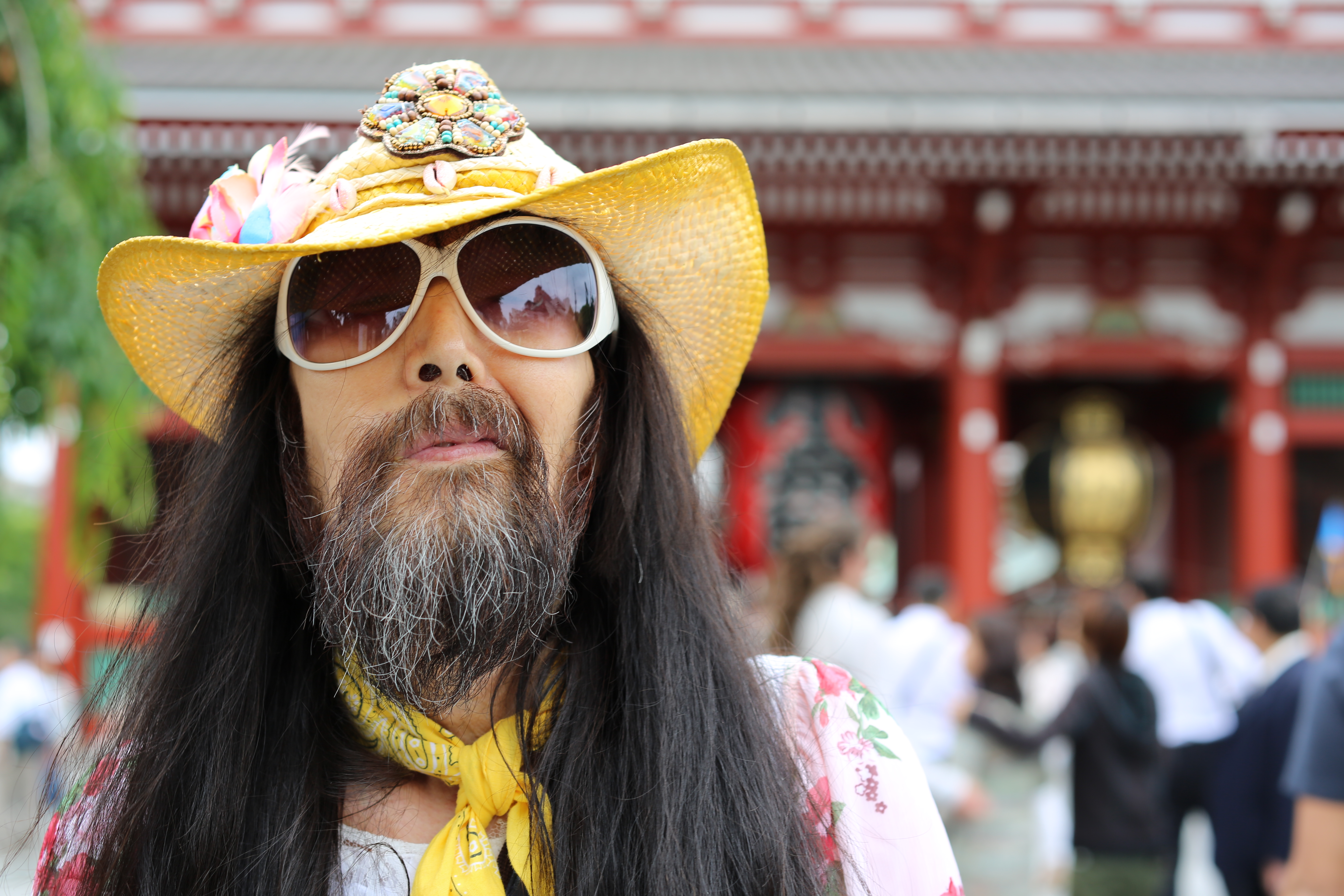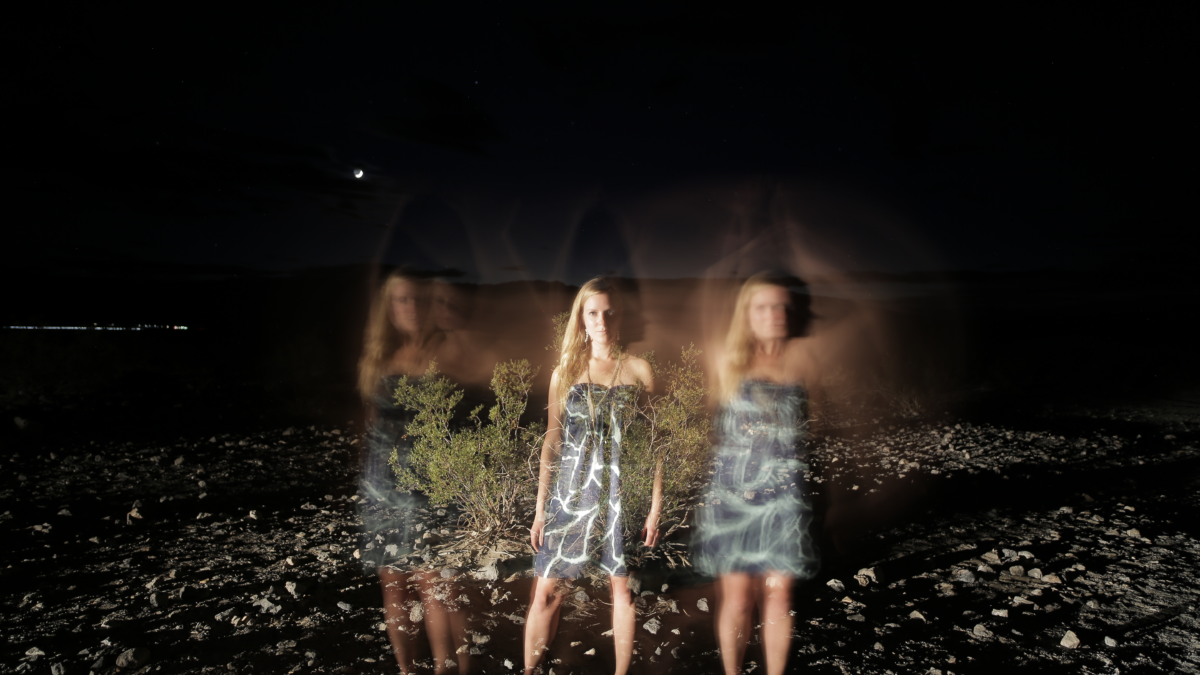SPEECHLESS IN JAPAN is an edgy, participatory documentary that follows a cross-dressing Japanese outcast confronted by judgment from strangers who question his way-of-life. The film, directed by Weronika Mliczewska, chronicles his personal, intimate and blunt journey in search of his own identity.
AAIFF ’16 presented SPEECHLESS IN JAPAN on July 22, 2016.

Jackie Lam: You quit your marketing job in Poland and moved across the globe to film SPEECHLESS IN JAPAN. What compelled you to do that?
Weronika Mliczewska: What I was working on a long time before SPEECHLESS was a documentary called LONG WAY…It’s about searching for one woman with just a photo in India and testing the borders of rationality, imagination, and possibility. Is there a spiritual connection between people to find each other?
[SPEECHLESS is about] following your intuition, your guts. There’s a strong feeling inside of you that makes you want to go across the world, somewhere the culture is so extremely different that no matter how much you study, you’ll never understand it. I quit my job, spent everything I had on a camera. There was an inner strength inside of me that said I should be here. It’s powerful to feel it and follow it. It never let me down.I was in Tokyo thinking, “What the hell am I doing here?”
I wanted to make a film about solitude, which is how I felt in Japan. Yamada San came out of the blue. He was sitting next to me and I said, “That’s him. I came here to meet this guy.”…The process of making films is doubting yourself, but this primal thing of feeling you’re in the right place is what I trusted for many years.
JL: Could you talk about your first meeting with Yamada San?
WM: He was very positive. I didn’t want to scare him. I started photographing him and told him to pose and he seemed to enjoy it. I said, “I’m an artist, who are you?”
And he said, “I am Yamada San.”
I made hand gestures to ask if I could film him. It was all about mutual trust. He trusted me to film him…He pointed to a place off of the map (where the map ends).
I was like, “Where is this weirdo taking me?”
We both didn’t know what was going on. The film is about a very true meeting of two strangers on a level of love beyond ourselves, beyond rational explanation. We didn’t follow our fears. I usually don’t do things like following a stranger on the street for a month. SPEECHLESS IN JAPAN is a social experiment about turning fear into trust.
[vimeo]https://vimeo.com/64183380[/vimeo]
JL: Could you speak more about how you felt like an outsider in Japan?
WM: Definitely. In Europe, in Poland, we have the concept of individual identities. In Japan, it’s about shared identity. Yamada San is rebellious, an outcast. The experience of becoming his mirror [cause me to become a “freak” as well]. A performer. To ask people on the street is taboo. Some of the strangers said, “Don’t follow him. He’ll harm you,” or “I won’t talk to you, it’s too extreme to translate.”
The people in the film were changing, and sometimes they would say, “Wow, I’ve never talked to someone like that and now I know how he thinks.” For me, the Other is a mirror of ourselves. To see the human in another person without those borders.
JL: Has Yamada San seen the film, and if so, what did he think?
WM: I don’t know, because I sent him the film through post—he doesn’t use Internet. He’s from another world. I made sure someone showed him the trailer—He loved it. We only communicate through phone or post. At some point, I lost touch with him. I don’t know why. He was ill—he had cancer.
JL: Do you consider Yamada San your friend? Was it difficult to maintain distance from him as a filmmaker?
WM: As a filmmaker, you carry a responsibility for your characters. It’s different from being a journalist…You develop a relationship with your character. You follow them, grow, and experience something together, whether you want to or not. But you are responsible for the feelings of this person. For sure, he is my friend—he’s my soulmate, even. You can be so close to someone [so different from you]. Even though there is everything to divide us, we are connected.
I never knew that my interaction with people on the street would actually change him. I never calculated anything with this story or thought I would be a part of it. It takes two people—I am a reflection of you, and you are of me—making a film is a dialogue, with your character, with the audience, with yourself. Something is exchanged with others.
JL: The music in the film really added another layer of meaning. What was the process like choosing it?
WM: It was a beautiful journey as well. It was composed by a friend over two weeks. I would be like, “How would you imagine loneliness?” And he would give me some instruments and I would choose…It was like re-directing the film again. The music speaks more than words. I decided not to do any voiceover [besides the intro].
The film is very subjective, so is the music, so are the takes. There is no truth, only our interpretation of the truth. It’s not about truth…Maybe the people on the street were translating Yamada San wrong. The truth is less important than hearing him and allowing him to talk and change.
There is a triangle—what Yamada San says, the people on the street’s interpretation through cultural influence, and then the camera.
My background is anthropology and it’s a bit aggressive to point a camera at a person. I have to look at a person through a lens…The lens became our language. Even though Yamada San appeared to be poor, he bought a camera to reciprocate and film me to show [he was interested in me as a person]. Let’s say the scene with the jellyfish—
JL: That’s my favorite shot.
WM: Our meeting is almost like the jellyfish he showed me. It’s shapeless, without norms, transparent, and free.

JL: What surprised you most during the filmmaking process?
WM: Sometimes I thought he would never reappear or I would get lost for like two hours because we couldn’t communicate. I would be like, Oh my God, he’s gonna be so mad at me or maybe he’s fed up with me following him. [Sometimes I would go home and cry, thinking,] “This is impossible—this man is such a good person and everyone thinks he’s not. This is touching me so deeply.”
For the first time in his life, he’s coming back to society and sharing. He was an outcast and he’s coming alive. He’s not mentally ill or disabled—he’s a performer, an artist. He thinks more deeply about society than those who judged him. He is very aware…To make documentaries is to be curious about human nature.
JL: How did the last scene come about?
WM: Oh that!…I felt like the whole world was spinning around us. I asked a stranger to say, “Please, Yamada San, could you record something for me? I won’t understand it, but it will stay with me after I leave.”
I had no idea what he said until I edited it with a translator. That was…a beautiful message of his life showing he’s a beautiful person.
JL: What was it like saying goodbye to him?
WM: That was amazing…[He asked the missionary and six homeless people to bring me to the airport.] The missionary said, “He never asks me for anything.”
He was inspired after that to take the homeless people to Mount Fuji…He started to feel accepted…I don’t have that on film, but sometimes life is more beautiful than film.
Weronika Mliczewska studied Anthropology and Filmmaking at Goldsmiths, University of London; Science of Culture at Warsaw University, Directing at UCLA Extensions. Weronika has a never ending curiosity towards life and another human being, thus she put herself in extreme situations life living among buskers on the streets, hitchhiking around Europe, living with the shamans and tribes, listening the stories of homeless and outcast. This made her understand the core emotions and experiences that makes us human and connect to the deepest emotions of happiness and pain, this is why her style is very emotional and subjective, making the audience discover it for themselves and connect to it on the deepest levels. Her style goes beyond this what can be seen through searching for spirituality and depth in another person. Visit www.speechlessinjapan.com for more details.

